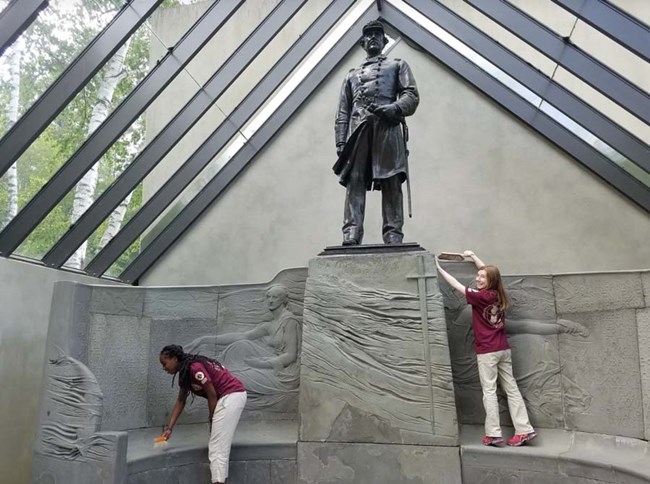Part of a series of articles titled Creative Teaching with Historic Places: Selections from CRM Vol 23 no 8 (2000).
Article
Developing the Next Generation of Preservation Professionals

Published by the National Park Service, Cultural Resources
by Antoinette J. Lee
The Teaching with Historic Places program allows the national historic preservation programs to reach out to new audiences, providing guidance on ways to integrate historic places into the teaching of history, social studies, art, and other subjects. In the process, the program also can implant in the minds of young people that historic preservation might also be a career to pursue.
Like many of the arts and humanities, historic preservation is often not viewed as a viable long-term career. To an outsider, it may seem to have an uncertain future and not be as remunerative as other career choices. While young people are encouraged to pursue careers in law, medicine, computer science, and business, few are urged to pursue careers in fields like history, archeology, museum management, historic architecture, and ethnography.
Unlike 30 years ago, the professional path to preservation careers today is much better defined. Several dozen undergraduate and graduate programs in historic preservation are available to those who wish to undertake specialized studies in this field. Research and analysis conducted in academic programs help students develop important skills needed to succeed in the field. Internships and other work assignments provide experience in the real world of preservation work. Consequently, many young people enrolled in preservation degree programs develop their resumes and are entering the field at all levels of government and in the private sector.
Meanwhile, new topics, such as diversity studies, computer technology, and land use management, illustrate that historic preservation is greatly influenced by broad societal changes.
As the concerns of the preservation field increasingly address historic properties associated with diverse cultural groups, the need for diverse professionals is all the more critical. Diverse professionals can provide new insights into the preservation and interpretation of historic properties. They can attract new supporters to the national historic preservation program, including political support from people who once regarded the field as an elite, non-diverse one. The participation of diverse professionals also demonstrates the inclusiveness of the preservation field.
In order to address the challenge of diversity, the National Park Service (NPS) established the Cultural Resources Diversity Initiative in 1998. One of its major purposes is to develop ways to attract diverse individuals to historic preservation professions. Providing an introduction to the preservation field as a profession is an important activity. In addition, NPS staff members are working with diverse organizations, colleges and universities, and communities on education and training projects.

…
Some wonder how we can attract young people to the preservation profession when many more lucrative careers are competing for new talent. My response is that we are not trying to attract every young person. We are trying to find those who will meet and fall in love with the profession, just as we did many years ago. We want to ensure that every person interested in a career in history and heritage will be aware that historic preservation and cultural resource stewardship is a career that one can prepare for and enter.
Perhaps a decade from now, the typical historic preservation program in government or in the private sector will address diversity topics as commonly as such programs now address early-20th-century bungalow neighborhoods, late-19th-century industrial historical structures, and the homes of major literary figures. This program also will employ a diverse staff as historians, archeologists, and landscape architects. Only then will the historic preservation field reflect the true promise of the United States as a place where people of all cultural groups work toward the common goal of defining the uniqueness of the American experience.
At the time of publication, Antoinette J. Lee was a historian with the National Center for Cultural Resources, National Park Service and program leader for the NPS Cultural Resources Diversity Initiative.
Last updated: July 2, 2019
